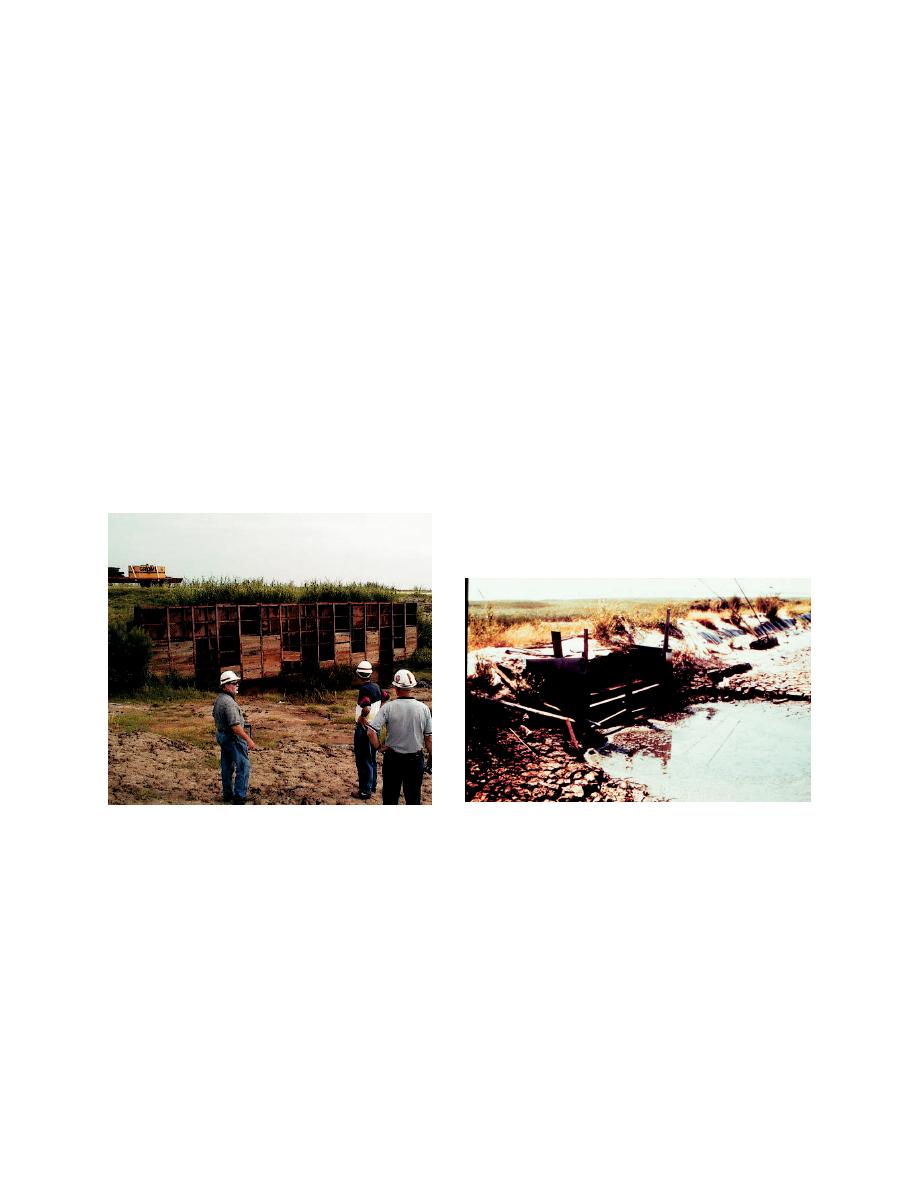 |
||
|
|
||
|
Page Title:
Figure 4. Weir boards in large weir, Blakeley Island site |
||
| |||||||||||||||
|
|
 ERDC TN-DOER-T3
January 2001
during dewatering operations. The tasks of raising and lowering weirs have not always been easy or
safe.
Conventional weirs have numerous operational disadvantages:
Placing or removing the weir boards at the proper time for optimum management of the efflu-
ent is difficult or impossible (Figures 4 and 5).
The dimensions of the boards almost never match the required depth of withdrawal and the
boards usually leak at the joints.
Some weirs also present a safety hazard for someone slipping and falling into the weir during
removal and placement of the weir boards (Figure 6).
Further, it is very difficult to ensure that all weir boards are level and at the same elevation,
leading to inefficiency since 100 percent of the weir crest is rarely used (Figure 7).
Floating debris at the weir crest causes large withdrawal velocities at greater depth, thereby
encouraging an additional sediment load in the effluent water.
Conventional weirs also provide an excellent habitat for snakes, spiders, and wasps.
Figure 4. Weir boards in large weir, Blakeley
Figure 5. Nonfunctional weir boards
Island site
In summary, personnel from Corps Districts have emphasized that using conventional rectangular
weir systems is tedious, manpower intensive, and expensive to maintain, has safety concerns, and,
unless carefully monitored and operated, can lead to water quality problems associated with the ef-
fluent from the placement site.
DESCRIPTION OF THE TELESCOPING WEIR: The telescoping weir is an innovative struc-
ture that has the ability to closely control the environmental water quality during decantation and
drainage of water from the dredged material surface of confined placement sites (Figure 8).
3
|
|
Privacy Statement - Press Release - Copyright Information. - Contact Us - Support Integrated Publishing |